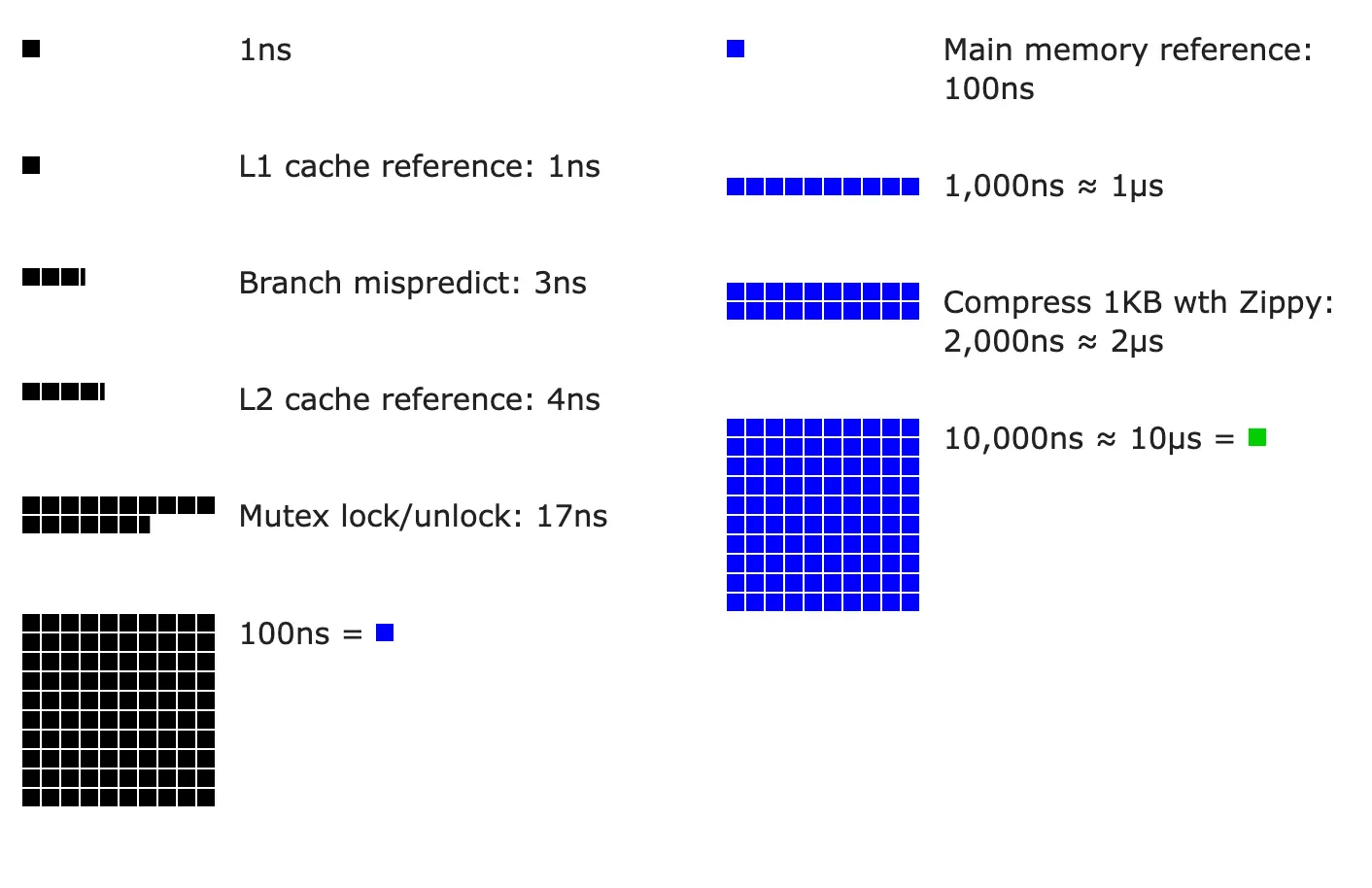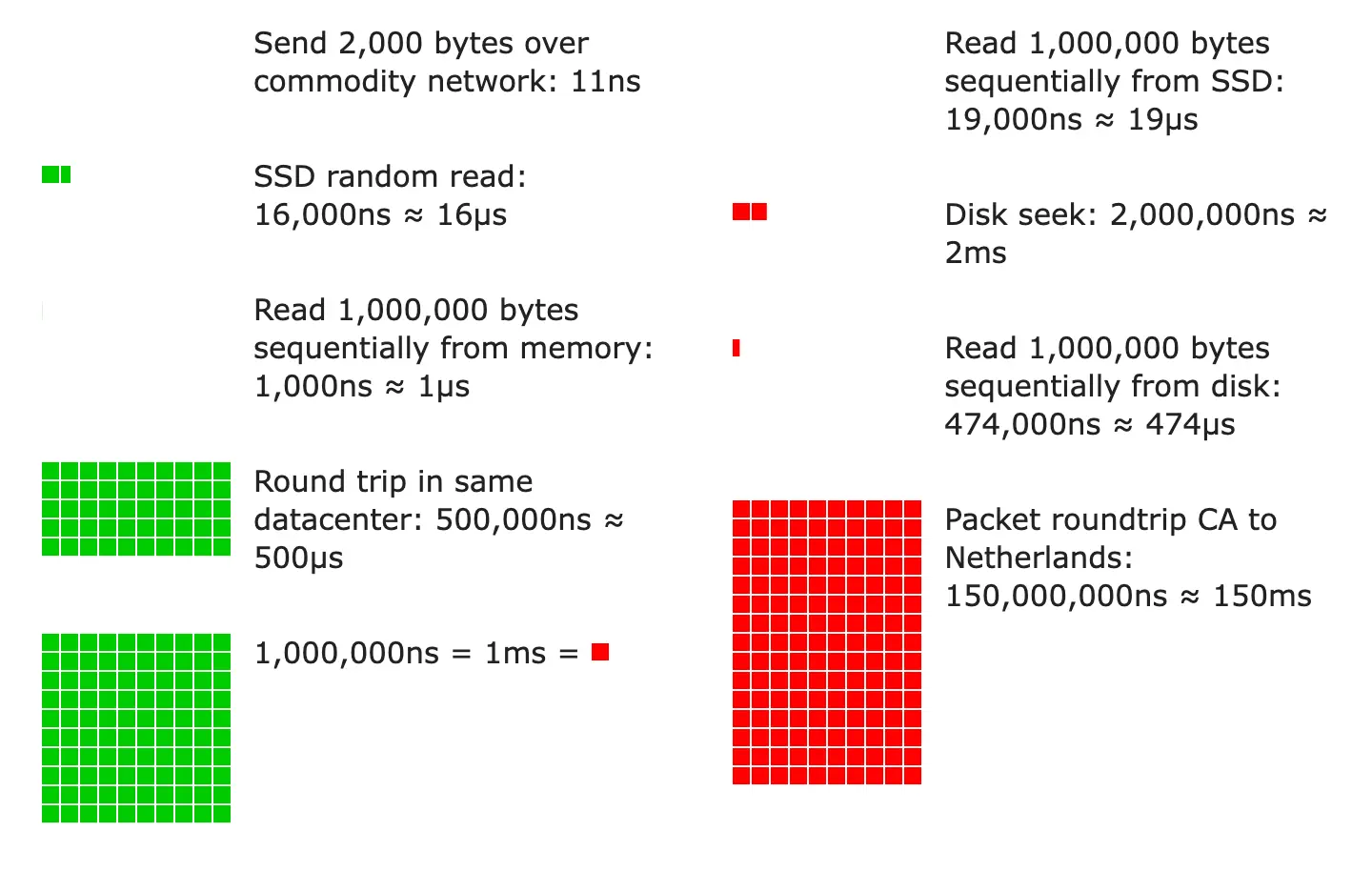Latency Numbers Every Programmer Should Know
在线预览地址:Latency Numbers Every Programmer Should Know


From Google SRE book
| Operation | Time in ns | Time in ms (1ms = 1,000,000 ns) |
|---|---|---|
| L1 cache reference | 1 | |
| Branch misprediction | 3 | |
| L2 cache reference | 4 | |
| Mutex lock/unlock | 17 | |
| Main memory reference | 100 | |
| Compress 1 kB with Zippy | 2,000 | 0.002 |
| Read 1 MB sequentially from memory | 10,000 | 0.010 |
| Send 2 kB over 10 Gbps network | 1,600 | 0.0016 |
| SSD 4kB Random Read | 20,000 | 0.020 |
| Read 1 MB sequentially from SSD | 1,000,000 | 1 |
| Round trip within same datacenter | 500,000 | 0.5 |
| Read 1 MB sequentially from disk | 5,000,000 | 5 |
| Read 1 MB sequentially from 1Gbps network | 10,000,000 | 10 |
| Disk seek | 10,000,000 | 10 |
| TCP packet round trip between continents | 150,000,000 | 150 |
Therefore, it is possible to read:
- sequentially from HDD at a rate of ~200MB per second
- sequentially from SSD at a rate of ~1 GB per second
- sequentially from main memory at a rate of ~100GB per second (burst rate)
- sequentially from 10Gbps Ethernet at a rate of ~1000MB per second
Back of the Envelope Calculations
Quick tips: Use numbers based on the decimal system to run numbers in your head. Sample calculation:
- What is the overall latency of retrieving 30 256kB images from one server?
Naïve design: do all the work on one machine - dominated by disk seek time.
| Reads required to generate page | 30 images / 2 disks per machine = 15 |
| Time to read one image from HDD | (256KB / 1MB) * 5 ms + 10 ms seek = 11.28 ms |
| Approximate time to generate results | 15 reads * 11.28 ms = 169.2 ms |
One HDD-based server can generate 1000 ms / 169.2 ms ~= 5 result pages per second.